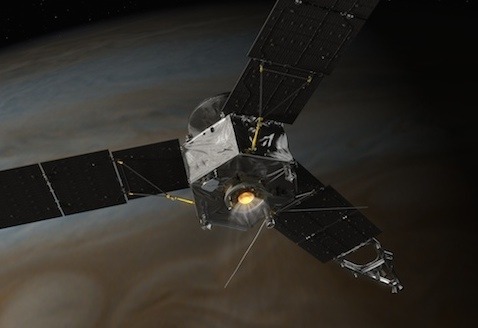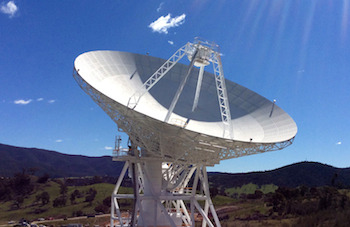91001tv - 91001.TV
More Posts from 91001tv and Others
What’s Up for January?

A meteor shower, a binocular comet and the winter circle of stars. Here are the details:
Quadrantid Meteor Shower

The Quadrantid meteor shower on Jan. 4 will either sizzle or fizzle for observers in the U.S. The shower may favor the U.S. or it could favor Europe depending on which prediction turns out to be correct. For viewing in the United States, observers should start at 3 a.m. EST. The peak should last about two hours with rates of 120 meteors per hour predicted in areas with a dark sky.
Comet Catalina

In the middle of the month, midnight to predawn will be primetime for viewing Comet Catalina. It should be visible with binoculars if you have a dark sky, but a telescope would be ideal. Between the 14th and 17th the comet will pass by two stunning galaxies: M51, the whirlpool galaxy and M101, a fainter spiral galaxy.
Constellation Orion

Winter is also the best time to view the constellation Orion in the southeastern sky. Even in the city, you’ll see that it’s stars have different colors. Not telescope needed, just look up a few hours after sunset! The colorful stars of Orion are part of the winter circle of stars.
Make sure to follow us on Tumblr for your regular dose of space: http://nasa.tumblr.com

FACT: Black college graduates are more than twice as likely to be unemployed.
FULL STORY: For Black Kids in America, a Degree Is No Guarantee
(via https://www.youtube.com/watch?v=2_JJ9gDLwHU)
Solar System: Things to Know This Week
Our solar system is huge, so let us break it down for you. Here are a few things you should know this week:
1. Science at the Edge

As the New Horizons spacecraft speeds away at more than 31,000 miles per hour (14 km/s) it continues to explore the Kuiper Belt, the region of icy bodies beyond Neptune. New Horizons has now twice observed 1994 JR1, a 90-mile-wide object orbiting more than 3 billion miles from the sun.
2. A Spaceship, Refined

This artist’s rendering shows our Europa mission spacecraft, which is being developed for a launch sometime in the 2020s. The mission will place a spacecraft in orbit around Jupiter to explore the giant planet’s moon Europa. This updated concept image shows tow large solar arrays extending from the sides of the spacecraft, to which the mission’s ice-penetrating radar antennas are attached. A saucer-shaped high-gain antenna is also side mounted with a magnetometer boom placed next to it. Find out more about the spacecraft HERE.
3. Sojourn at Saturn

The Cassini spacecraft is hard at work this week, orbiting Saturn to study the planet and its rings. The recent pictures are spectacular, take a look at them HERE.
4. Talking Juno

Our Juno mission arrives at Jupiter on July 4, and that presents a unique opportunity for educators, science communicators and anyone interested in space exploration. We are providing a growing set of Juno-related information resources. Take a look at them HERE.
5. Now THAT’S a Long Distance Call

How do explorers on Earth talk to astronauts and robotic spacecraft flung across the far reaches of space? They use the remarkable technology deployed by our Space Communications and Navigation (SCaN) Program Office. This month, SCaN is celebrating its 10th anniversary of managing the ultimate network. Find out how it works HERE.
Want to learn more? Read our full list of the 10 things to know this week about the solar system HERE.
Make sure to follow us on Tumblr for your regular dose of space: http://nasa.tumblr.com
Infrared is Beautiful
Why was James Webb Space Telescope designed to observe infrared light? How can its images hope to compare to those taken by the (primarily) visible-light Hubble Space Telescope? The short answer is that Webb will absolutely capture beautiful images of the universe, even if it won’t see exactly what Hubble sees. (Spoiler: It will see a lot of things even better.)

The James Webb Space Telescope, or Webb, is our upcoming infrared space observatory, which will launch in 2019. It will spy the first luminous objects that formed in the universe and shed light on how galaxies evolve, how stars and planetary systems are born, and how life could form on other planets.
What is infrared light?
This may surprise you, but your remote control uses light waves just beyond the visible spectrum of light—infrared light waves—to change channels on your TV.
Infrared light shows us how hot things are. It can also show us how cold things are. But it all has to do with heat. Since the primary source of infrared radiation is heat or thermal radiation, any object that has a temperature radiates in the infrared. Even objects that we think of as being very cold, such as an ice cube, emit infrared.
There are legitimate scientific reasons for Webb to be an infrared telescope. There are things we want to know more about, and we need an infrared telescope to learn about them. Things like: stars and planets being born inside clouds of dust and gas; the very first stars and galaxies, which are so far away the light they emit has been stretched into the infrared; and the chemical fingerprints of elements and molecules in the atmospheres of exoplanets, some of which are only seen in the infrared.
In a star-forming region of space called the ‘Pillars of Creation,’ this is what we see with visible light:

And this is what we see with infrared light:

Infrared light can pierce through obscuring dust and gas and unveil a more unfamiliar view.
Webb will see some visible light: red and orange. But the truth is that even though Webb sees mostly infrared light, it will still take beautiful images. The beauty and quality of an astronomical image depends on two things: the sharpness of the image and the number of pixels in the camera. On both of these counts, Webb is very similar to, and in many ways better than, Hubble. Webb will take much sharper images than Hubble at infrared wavelengths, and Hubble has comparable resolution at the visible wavelengths that Webb can see.

Webb’s infrared data can be translated by computer into something our eyes can appreciate – in fact, this is what we do with Hubble data. The gorgeous images we see from Hubble don’t pop out of the telescope looking fully formed. To maximize the resolution of the images, Hubble takes multiple exposures through different color filters on its cameras.
The separate exposures, which look black and white, are assembled into a true color picture via image processing. Full color is important to image analysis of celestial objects. It can be used to highlight the glow of various elements in a nebula, or different stellar populations in a galaxy. It can also highlight interesting features of the object that might be overlooked in a black and white exposure, and so the images not only look beautiful but also contain a lot of useful scientific information about the structure, temperatures, and chemical makeup of a celestial object.
This image shows the sequences in the production of a Hubble image of nebula Messier 17:

Here’s another compelling argument for having telescopes that view the universe outside the spectrum of visible light – not everything in the universe emits visible light. There are many phenomena which can only be seen at certain wavelengths of light, for example, in the X-ray part of the spectrum, or in the ultraviolet. When we combine images taken at different wavelengths of light, we can get a better understanding of an object, because each wavelength can show us a different feature or facet of it.
Just like infrared data can be made into something meaningful to human eyes, so can each of the other wavelengths of light, even X-rays and gamma-rays.
Below is an image of the M82 galaxy created using X-ray data from the Chandra X-ray Observatory, infrared data from the Spitzer Space Telescope, and visible light data from Hubble. Also note how aesthetically pleasing the image is despite it not being just optical light:

Though Hubble sees primarily visible light, it can see some infrared. And despite not being optimized for it, and being much less powerful than Webb, it still produced this stunning image of the Horsehead Nebula.

It’s a big universe out there – more than our eyes can see. But with all the telescopes now at our disposal (as well as the new ones that will be coming online in the future), we are slowly building a more accurate picture. And it’s definitely a beautiful one. Just take a look…
…At this Spitzer infrared image of a shock wave in dust around the star Zeta Ophiuchi.

…this Spitzer image of the Helix Nebula, created using infrared data from the telescope and ultraviolet data from the Galaxy Evolution Explorer.

…this image of the “wing” of the Small Magellanic Cloud, created with infrared data from Spitzer and X-ray data from Chandra.

…the below image of the Milky Way’s galactic center, taken with our flying SOFIA telescope. It flies at more than 40,000 feet, putting it above 99% of the water vapor in Earth’s atmosphere– critical for observing infrared because water vapor blocks infrared light from reaching the ground. This infrared view reveals the ring of gas and dust around a supermassive black hole that can’t be seen with visible light.

…and this Hubble image of the Mystic Mountains in the Carina Nebula.

Learn more about the James Webb Space Telescope HERE, or follow the mission on Facebook, Twitter and Instagram.
Image Credits Eagle Nebula: NASA, ESA/Hubble and the Hubble Heritage Team Hubble Image Processing - Messier 17: NASA/STScI Galaxy M82 Composite Image: NASA, CXC, JHU, D.Strickland, JPL-Caltech, C. Engelbracht (University of Arizona), ESA, and The Hubble Heritage Team (STScI/AURA) Horsehead Nebula: NASA, ESA, and The Hubble Heritage Team (STScI/AURA) Zeta Ophiuchi: NASA/JPL-Caltech Helix Nebula: NASA/JPL-Caltech Wing of the Small Magellanic Cloud X-ray: NASA/CXC/Univ.Potsdam/L.Oskinova et al; Optical: NASA/STScI; Infrared: NASA/JPL-Caltech Milky Way Circumnuclear Ring: NASA/DLR/USRA/DSI/FORCAST Team/ Lau et al. 2013 Mystic Mountains in the Carina Nebula: NASA/ESA/M. Livio & Hubble 20th Anniversary Team (STScI)
Make sure to follow us on Tumblr for your regular dose of space: http://nasa.tumblr.com.
(via https://www.youtube.com/watch?v=E6t1kxX-EpI)

With each of its 10,000 pulses per second, the laser instrument aboard NASA's ICESat-2 is sending 300 trillion green photons of light to the ground and detecting the few that return: the method it uses to measure Earth’s changing ice. By the morning of Oct. 3, ICESat-2 returned its first height measurements across the Antarctic ice sheet.



